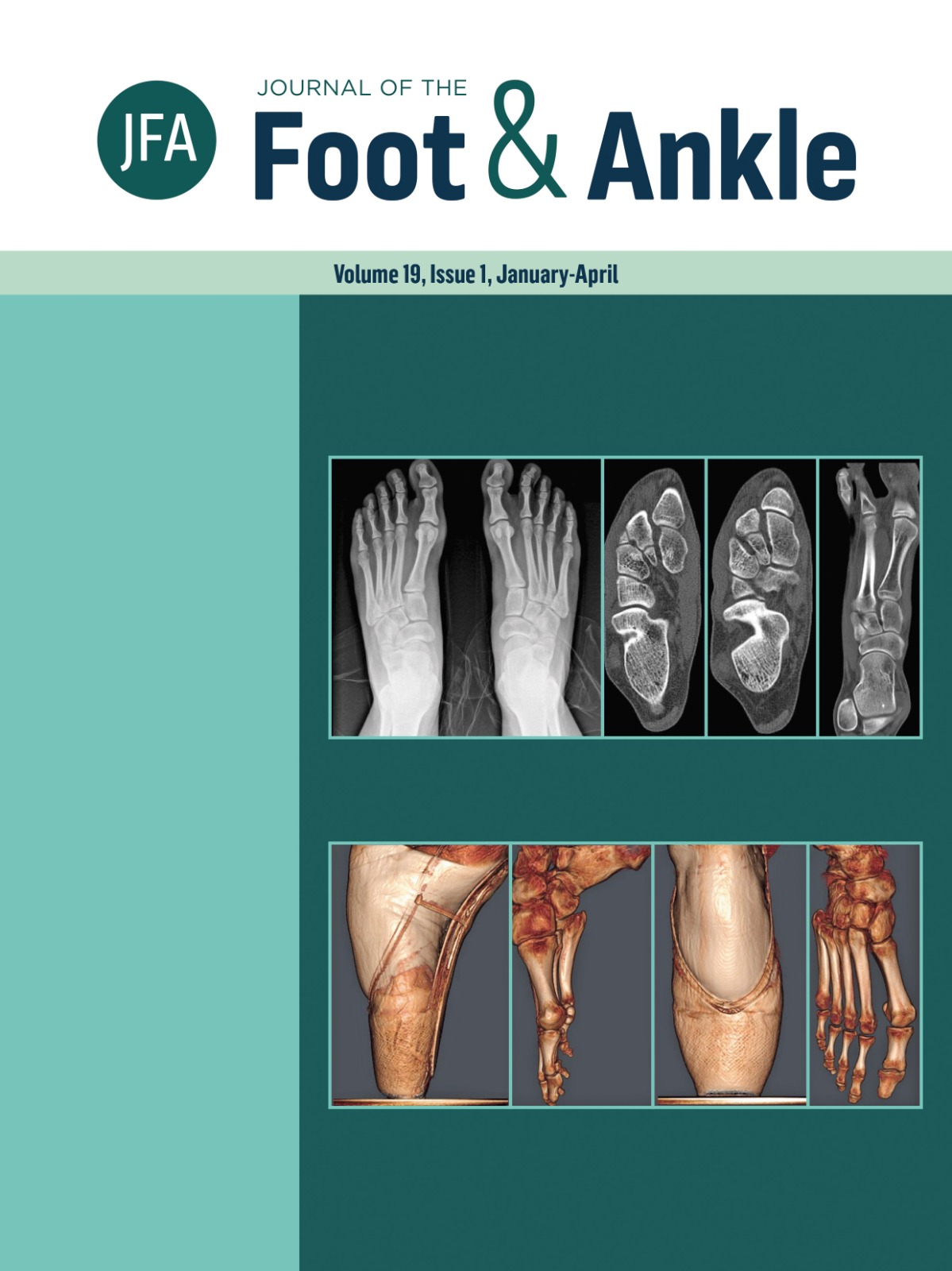Epidemiological Study of Posterior Malleolus Fractures
DOI:
https://doi.org/10.30795/jfootankle.2025.v19.1812Keywords:
Epidemiology; Ankle fractures.Abstract
Objective: Perform an epidemiological analysis of patients who suffered ankle fractures, including the posterior malleolus. Methods: Data were collected from 123 consecutive patients who suffered ankle fractures affecting the posterior malleolus between October 2021 and November 2023 in one institution. Skeletally immature patients or patients with incomplete radiological exams were excluded, including a final sample of 100 patients. The parameters analyzed were sex, age, side, comorbidities, mechanism of trauma, and associated injuries. In addition, fractures were evaluated according to Danis-Weber and Bartoníček classifications. Results: Posterior malleolus fractures were more present in females on the right side and in the 5th decade of life, and comorbidities were observed in 46% of patients. The most frequent trauma mechanism was ankle sprain at ground level, and the main associated injury was tibial shaft fracture. The most frequent posterior malleolus fractures were Bartoníček type 2 and fibular fractures, Danis-Weber type B. Conclusion: Posterior malleolus fractures occurred predominantly in females in the 5th decade of life, after ankle sprains, Bartoníček type 2. Hypertension was the most prevalent comorbidity, and the most common associated fracture was transindesmal fractures of the fibula (Danis-Weber B). Level of evidence IV, Therapeutic studies, Case series.
Downloads
Published
How to Cite
Issue
Section
License
Copyright (c) 2025 Journal of the Foot & Ankle

This work is licensed under a Creative Commons Attribution-NonCommercial 4.0 International License.







